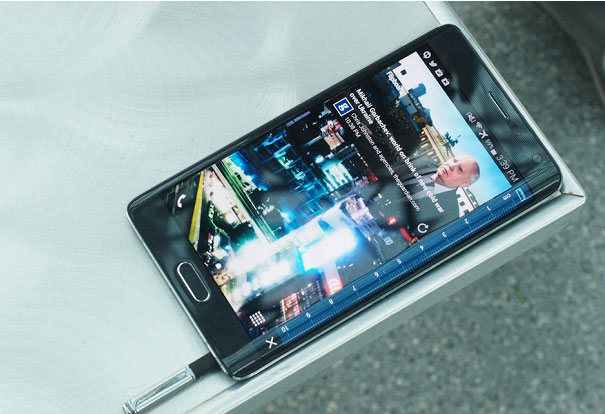Samsung’s second experimentally screened phone is out and has got people talking. Yes, the phone with a properly curved screen has its targeted audience in for a surprise. If you look at the basic shape and concept, the curved-screen uniquely comes out as a fresh innovation. But the phone draws so many features from the Galaxy Note 4 that one wonders if the curved screen is the only new addition or is there more to anticipate from the new, unconventional handset.
The Galaxy Note Edge is an attention grabbing piece with its subjective and divisive curves. The screen looks great, with the punchy contrast and sharpness that has been a Samsung flagship pillar for years.
Going head to head with the Note 4, the Note Edge boasts of the same high-resolution (2,560 × 1,600) screen as well as a 2.7GHz processor. A similar 3GB of RAM and 32GB of storage (and a 64GB option), with a microSD slot for expansion also confirms how close one is to the other. The phone’s battery, however, stays a little behind the Note 4. A slightly smaller 3,000mAh pack powers this special edition Note, as compared to 3,220mAh offered in the Note 4.
Although slightly more expensive as compared to the Galaxy Note 4, the phone is beautiful with its high-resolution curved display. Most of the features and looks are pretty similar to Galaxy Note 4. It has nearly all the same design touches and material finishes as the Note 4. The phone provides a long battery life and definitely has an excellent camera.
Samsung certainly stood for no compromises while designing the imaging capabilities of the Note Edge. The new model boasts a 16-megapixel camera, with Samsung’s “smart OIS” that is intended to increase the light (and detail) in low light areas. The front-facing camera is also a top-end sensor compared to the competition, 3.7 megapixels with an f/1.9 lens.
Overall, Samsung has provided the Galaxy Edge user with some of the best components beneath that unique display: 3GB of RAM to ensure multitask windowing runs smoothly, and a quad-core Snapdragon 805 processor to back it up.
